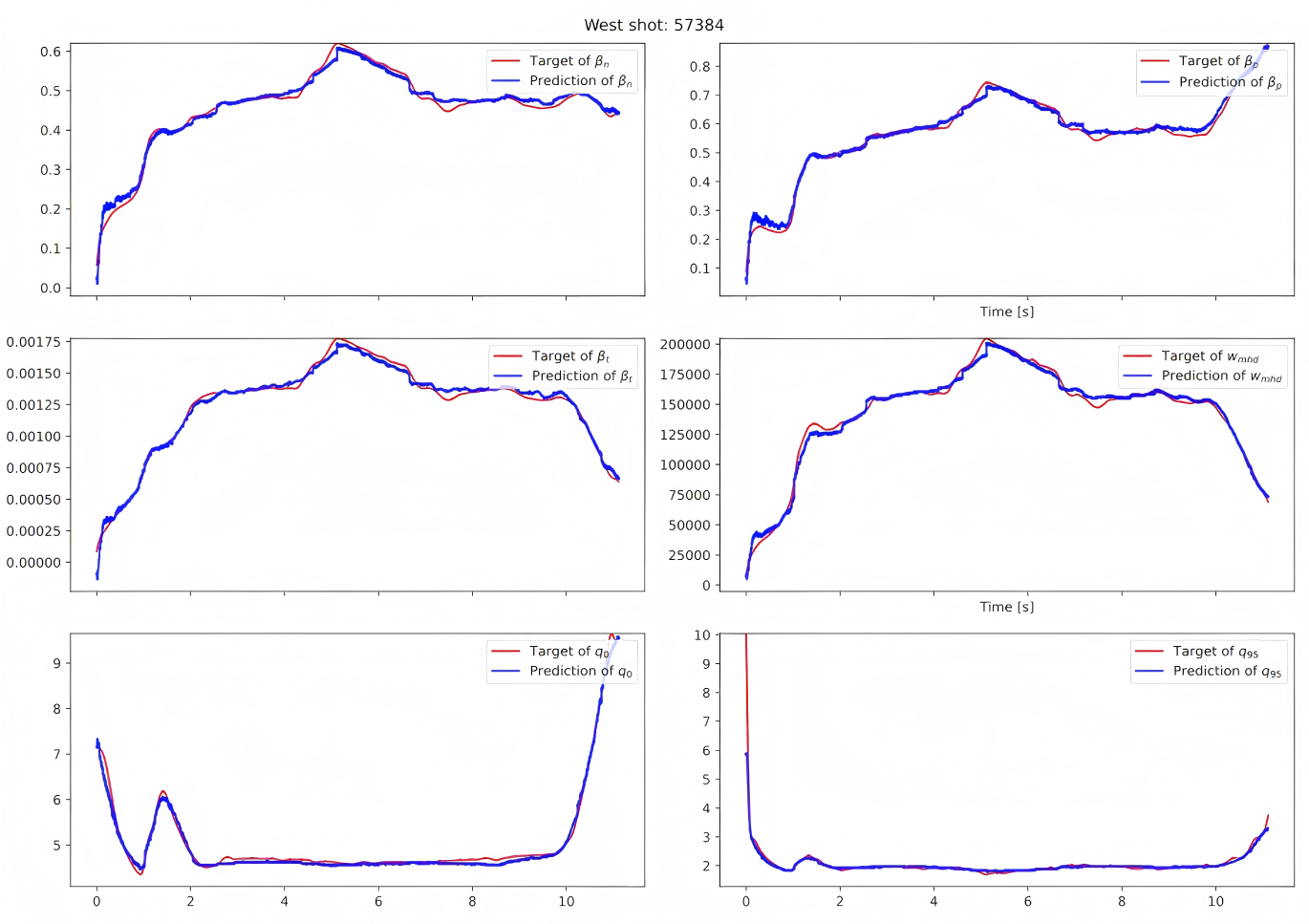Speaker
Description
Chenguang Wan 1,3, *, Feda Almuhisen 2 , Philippe Moreau 2 , Remy Nouailletas 2 , Zhisong Qu 1 , Youngwoo Cho 1 , Robin Varennes 1 , Kyungtak Lim 1 , Kunpeng Li 1 , Zhengping Luo 3 , Qiping Yuan 3 , Xavier Garbet 1,2
1 School of Physical and Mathematical Sciences, Nanyang Technological University, Singapore
2 CEA, IRFM, Saint Paul-lez-Durance, France
3 Institute of Plasma Physics, Hefei Institutes of Physical Science, Chinese Academy of Sciences, Hefei, China
* Who is the speaker
Email: chenguang.wan@ntu.edu.sg
Tokamak discharge settings play a crucial role in determining the execution of tokamak experiments. Estimating discharge results prior to execution is highly beneficial for validating diagnostic signal consistency, assisting in experimental data analysis, verifying theoretical models, and advancing control technology research and development.
Traditional physics-driven modeling tools rely on empirical models or first-principle derivations, commonly referred to as Integrated Modeling. This approach consists of a suite of modular codes that address various physical processes within the tokamak, including core transport, equilibrium, stability, boundary physics, heating, fueling, and current drive. Notable modeling workflows include ETS, PTRANSP, TSC, CRONOS, JINTRAC, METIS, ASTRA, and TOPICS. However, due to the complex nonlinear interactions between plasma and the tokamak system, directly estimating discharge results based on the discharge setup remains a significant scientific challenge.
To address this, researchers have increasingly turned to data-driven approaches, exploring applications such as disruption prediction, tokamak operation using reinforcement learning, plasma tomography, radiated power estimation, instability identification, neutral beam effect estimation, confinement regime classification, scaling law determination, filament detection on MAST-U, electron temperature profile estimation via SXR with Thomson scattering, coil current prediction in W7-X based on heat load patterns, equilibrium reconstruction, and equilibrium solvers.
Furthermore, machine learning methods have been explored for control purposes, particularly in accelerating computational processes. Notably, there are several works focused on directly controlling tokamak parameters [1, 2]. However, to the best of the authors' knowledge, few studies [3, 4] have directly estimated tokamak discharge results based on discharge setup parameters.
In this study, we train a neural network model using a temporal sequence of discharge settings and diagnostic signals from 550 WEST discharges. The model successfully reproduces six plasma parameters:
-
Normalized beta ($\beta_n$)
-
Toroidal beta ($\beta_t$)
-
Poloidal beta ($\beta_p$)
-
Plasma stored energy ($W_{mhd}$)
-
Safety factor at magnetic axis ($q_0$)
-
Safety factor at 95% flux surface ($q_{95}$)

Acknowledgements
The computational work for this article was partially performed using resources of the [National Supercomputing Centre, Singapore (https://www.nscc.sg).
This research is supported by the National Research Foundation, Singapore.
References
- Degrave, J., Felici, F., Buchli, J. et al. Magnetic control of tokamak plasmas through deep reinforcement learning. Nature, 602(7897), 414 (2022).
- Seo, J., Lee, Y., Park, J. et al. Avoiding fusion plasma tearing instability with deep reinforcement learning. Nature, 626(8000), 746 (2024).
- Wan, C., Yu, Z., Wang, F., Liu, X., Li, J. Experiment data-driven modeling of tokamak discharge in EAST. Nuclear Fusion, 61(6), 066015 (2021).
- Wan, C., Yu, Z., Pau, A., Liu, X., Li, J. EAST discharge prediction without integrating simulation results. Nuclear Fusion, 62(12), 126060 (2022).
| Speaker's email address | chenguang.wan@ntu.edu.sg |
|---|---|
| Speaker's Affiliation | Nanyang Technological University |
| Member State or International Organizations | Singapore |
